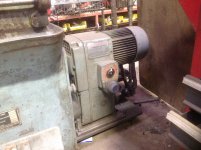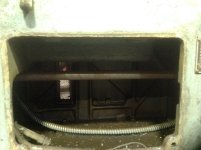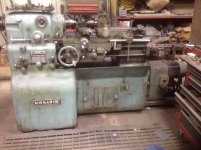Our Monarch EE originally was one of the self contained DC power units. When it started giving us trouble, we came up with our own solution, rather than converting it to the modern all electronic controled drives that refurbished machines employ.
We took the armature out of the main drive motor, and replaced it with a solid shaft with fits sticking out from each end. We then mounted a variable speed drive, (CVT), in line with that at the back of the lathe, with a u-jointed drive shaft connecting it.
The main reason we did this was we could do it all in house, and, more or less, made the lathe a total mechanical unit.
http://benchrest.com/attachment.php?attachmentid=18730&stc=1&d=1481725003
http://benchrest.com/attachment.php?attachmentid=18731&stc=1&d=1481725116
http://benchrest.com/attachment.php?attachmentid=18732&stc=1&d=1481725228






